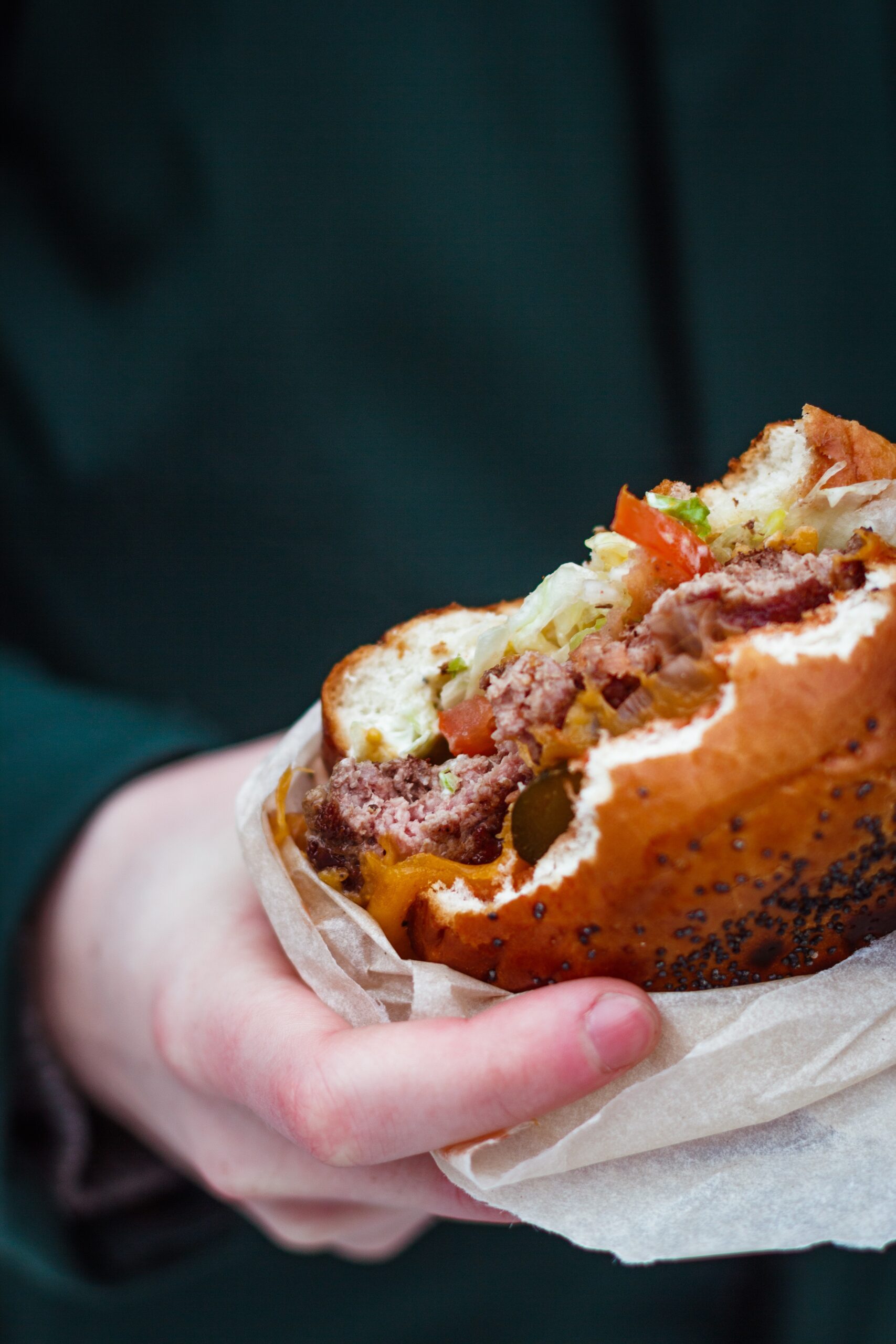Hello everybody, over the last few years the debate about lab-grown meat has exploded exponentially, with companies like GOOD Food, Mosa Meat and SuperMeat, and many more, leading the industry of artificially grown meat products. Recently the FDA approved lab-grown meat for human consumption in the US, which will ultimately mean that we’ll start talking a lot more about it and seeing it a lot more in our news feed. As such, I want to take the time to talk about the environmental impact, the ethics, and generally where this industry could be going.
Firstly, a practical run-through. This product has many names, we have gone from calling it “vat meat”, to “lab meat”, to “cultured meat”, and now “cultivated meat”. The difference comes down to marketing. “Cultivated” sounds better than “lab”, but it is the same product that’s being talked about, just with more or less a PR spin.
The Demand for Sustainable Meat
The reason why this product exists in the first place is that more and more consumers, investors, and companies are seeing the issues arise with conventional animal agriculture and factory farming. On average, a European citizen consumes 80 kilograms of meat in a year. This industry has a massive impact on the planet, with over 70 billion livestock slaughtered globally every year. This takes a huge toll on the planet and its resources. For instance, it requires 1800 gallons of water to produce 1 pound of beef. Furthermore, 80% of agricultural land is used for livestock, or food for livestock – yet meat only provides 20% of our calories. Looking at animal agriculture from the planet’s perspective, it’s really bad for business, we use way too many resources to produce very little. Actually, if the world went plant-based we could reduce the necessary agricultural space required to feed a growing population from 4 to 1 billion hectares of land – as such re-wilding more areas, creating more space for biodiversity, and reducing pollution with a whole lot. Right now, if we want to reach our climate goals, it is estimated that consumers, specifically in rich countries account for the vast majority of the consumption, will have to reduce their intake of meat by 75%
As such, many companies are investing in new ways to create meat products that use fewer resources, less land, and less energy, but have the same taste, texture, and nutritional profile as meat – this is where lab-grown meat comes in, how is it made exactly?
Also check out: THE ENVIRONMENTAL IMPACT OF SOY // is tofu destroying the planet?
How is lab-grown meat made?
Cultivated meat is grown in vitro, in anything from a test tube, to a bioreactor, as such, the meat grown in these labs has never been an animal requiring resources to stay alive, only the parts we’re eating are produced. The process of cultivating meat is borrowed from research into regenerative medicine, and in fact, Professor Mark Post of Maastricht University, who cultured the world’s first burger in 2013, was previously working on repairing human heart tissue – so this technique is not new per se, we’re simply using technologies we already apply in other fields, of course with some adjusted elements. To culture meat, cells are acquired from an animal by biopsy (you don’t need to kill the animal to perform a biopsy, it simply means that you have a small cell sample from that animal). Then it is placed in a warm, sterile vessel with a solution called a growth medium, containing nutrients including salts, proteins, and carbohydrates – we’ll come back to what this growth medium is made of in a second. Every 24 hours or so, the cells will have doubled.
One of the big differences between growing cells of meat in a lab and slaughtering an animal is that in cellular farming you can’t grow cuts of meat, with bone and skin, or marbled fat. Muscle cells require different conditions and nutrients for fat cells, so they must be made separately. When pure meat or fat is harvested, it is a formless paste of cells. This is why the first cultivated meat products served up have been chicken nuggets or burgers – this is only why those products are some of the easiest to mimic with plant-based proteins because they are already so far away from their original state. And this is why creating a cultivated, or plant-based steak is so difficult because it’s a lot closer.
Cellular agriculture trailblazers also argue that its cheap burgers and chicken are using up the majority of the one-third of the planet that’s currently dedicated to growing farm-animal feed, so these products are both the most urgent and easiest to get to market.
However, the most prominent question is, is it actually sustainable?
Also check out: 10 most effective ways to reduce your impact // advanced tips for the experienced

Is it better for the planet?
According to Oxford University, lab-grown meat could cut down greenhouse gas emissions by 96%, and furthermore, switching to cultivated meat can cut water consumption from between 82-96% depending on the products compared. Already there is a lot to be gained here. Furthermore, it could mean that a lot fewer animals would have to be slaughtered, like… A lot less. A lot of farm space would free up, and the risk of outbreak and zoonosis would be significantly reduced. We would see fewer bacteria resistant to antibiotics as well, which is definitely an important part of this conversation because we have known for decades that the animal agriculture industry has the potential of generating bacteria we are helpless against, which could be catastrophic. So theoretically, there is a lot to be gained, as this study also shows:
In a lifecycle assessment from the American Chemical Society, results showed that the production of 1000 kg cultured meat requires 26–33 GJ energy, 367–521 m3 water, 190–230 m2 land, and emits 1900–2240 kg CO2-eq GHG emissions. In comparison to conventionally produced European meat, cultured meat involves approximately 7–45% lower energy use, 78–96% lower GHG emissions, 99% lower land use, and 82–96% lower water use. These numbers vary of course depending on which meats are compared. Despite high uncertainty, it is concluded that the overall environmental impacts of cultured meat production are substantially lower than those of conventionally produced meat (Environ. Sci. Technol. 2011, 45, 14, 6117–6123).
But it is important to note that while LCA’s and other types of theories and analysis show that it is way less impactful, many experts are still pointing out that there is no way of knowing for sure before cultured meat is mass produced. There are many impacts of a supply chain that is difficult, or even impossible to determine before it exists, but it sure does look like it could save a lot of resources. Especially energy use in the mass production of cultivated meat is hard to account for when it isn’t real yet, but it does highlight the importance of renewable energy in the supply chain.
Also check out: HOW DO YOU KNOW IF A BRAND IS SUSTAINABLE / making eco decisions 101
Is it ethical?
And by ethical, I mean, how far removed from the process are the animals. Would it be able to be considered vegan, or vegetarian? Well, the biopsy is functionally harmless to the animal, although it might even be a deal breaker for some people, which is fair. However there is no denying, that even if this option is considered not vegan or vegetarian still, it would be absolutely game-changing to see the reduction of animals in the food industry – vegan or not, that’s the goal. Overall, the amount of animals we could potentially save from slaughter with cultivated meat is massive. But, the production of cultivated meat does still involve some animals. Until recently, in order to kick-start the cell division (the growth of the meat), about 20% of the aforementioned growth medium had to be fetal bovine serum, drawn from the blood of a cow fetus. Not only is the serum prohibitively expensive, which slows down the development of widespread availability, but it’s also not vegetarian. However, alternatives are being developed. One technique that is being developed uses genetically modifying yeast to produce the necessary proteins. This technology, called precision fermentation, is similar to how medical insulin is made. So there is hope that lab-grown meats will become a lot more suitable for people who reduce and phase out conventional meat based on ethics and the environment.
Why cultured meat isn’t mass-produced yet
The main reason, aside from the product requiring additional legislation and approvals before they can become available and growth mediums being expensive, the problem is up-scaling the production. The cultured meat industry would need to produce “a minimum of 15 million pounds [6.8 million kilos] per year at a facility, which is sort of a rule of thumb for national distribution across the US or Western Europe.” This would require bioreactors that hold at least 200,000 liters, which has never been done in cell culture, ever. In Singapore, lab-grown is rather widespread, at least compared to the rest of the world, but right now the largest size that lab-grown meat is produced in is 1,200 liters, which is very small, relative to what is required for international consumption. This issue of logistics and up-scaling is the single biggest limiting step of the entire industry. When the industry figures out how to up-scale the production, the prices of the products will come down and compete with conventional meat products.
Also check out: ZERO WASTE SHOPPING IN A SUPERMARKET // + cooking with whatever I buy
Why innovate meat – why not eat plants?
Could you argue that it is more sustainable, and better for the planet to drop the research of lab-grown meat and simply just eat plants? While it is completely fair to prefer whole foods and an all-plant-based diet, even if lab-grown meat is perfected, it is not a real reality to except the whole world to do the same. Meanwhile, looking solely at the environmental aspects of animal agriculture, producing a much smaller amount of animal products won’t have the same impact – as such, a reduction of the animal agriculture sector would solve a lot of global issues. From an environmental point of view, there is also no objection to careful grazing with a limited number of animals.
There is also the notion that poorer regions in particular also lack plant sources of high-quality proteins and micronutrients. For instance, vegetables and legumes cannot be grown everywhere and, moreover, can be harvested only at certain times of the year. Moreover, the poorer countries and their meat consumption has never been the problem, at all boils down to the mass production that produces meat and dairy to satisfy consumers in the richer economies – which already have all the plant-based food options available to them, just FYI. It means that the rich countries in particular have the responsibility of reducing their meat consumption, by either substituting with plant-based proteins or looking towards artificially grown meat. And the more people we get to avoid factory farming, the better.
Also check out: The Impact of Electric Cars // are they really sustainable?

Purism and food
So just to nip something in the bud, before I end this analysis, I want to talk about the narratives around lab-grown meat and environmentalism. One thing in particular that I see circulating all the time, that as many people freaked out is related to health and “synthetic” and artificial food. While there is no point in arguing that red meat is not healthy, and overall, that the human body is not designed to consume the quantities of meat that it on average in rich economies is – as we can see from the health-related consequences of consuming meat and dairy, I do want to talk about the purist mentality we often have when it comes to food. We also see it with GMOs, which I would love to talk about as well. Many consumers are freaked out by the idea of their food being grown in a lab. The discourse surrounding lab-grown is often that it is full of chemicals, that it’s synthetic and thus unhealthy, and that it is, yeah, grown in a lab. And while there are valid concerns, the fact that it is grown in a lab shouldn’t be one of them. Actually, it will probably turn out much healthier, as there is no risk of cross-contamination as we see with factory farming, there is no exposure to obscene amounts of antibiotics, and nowhere near the same risks of being contaminated with bacteria like E. Coli or Salmonella. Actually, a sterile environment causes a lot fewer health issues than a factory farm.
Moreover, unless you solely live off your own land and grow your own food, your food has been to a lab at some point. Of course, mock meats and other types of vegan substitutes were engineered in a lab, but so were our fruit and vegetables – and it’s not a bad thing. Bioengineering produce can mean everything from better nutritional value to larger yields and easier digestion. And while it wasn’t always done in a lab, we have modified and engineered our food since humans started cultivating the land. The fact that food has been through a lab doesn’t make it dangerous. However, due to marketing consumers often forget that there are steps between harvesting produce and eating it, so many steps, so many people and companies that are working to optimize a product. So while it is completely fair to not want to partake in lab-grown meats or vegan mock meats, it shouldn’t be because of the geographical location of their origin at least. It is a lot more complex than that, that’s all I am saying.
Also check out: The Environmental Impact of Cryptocurrency




